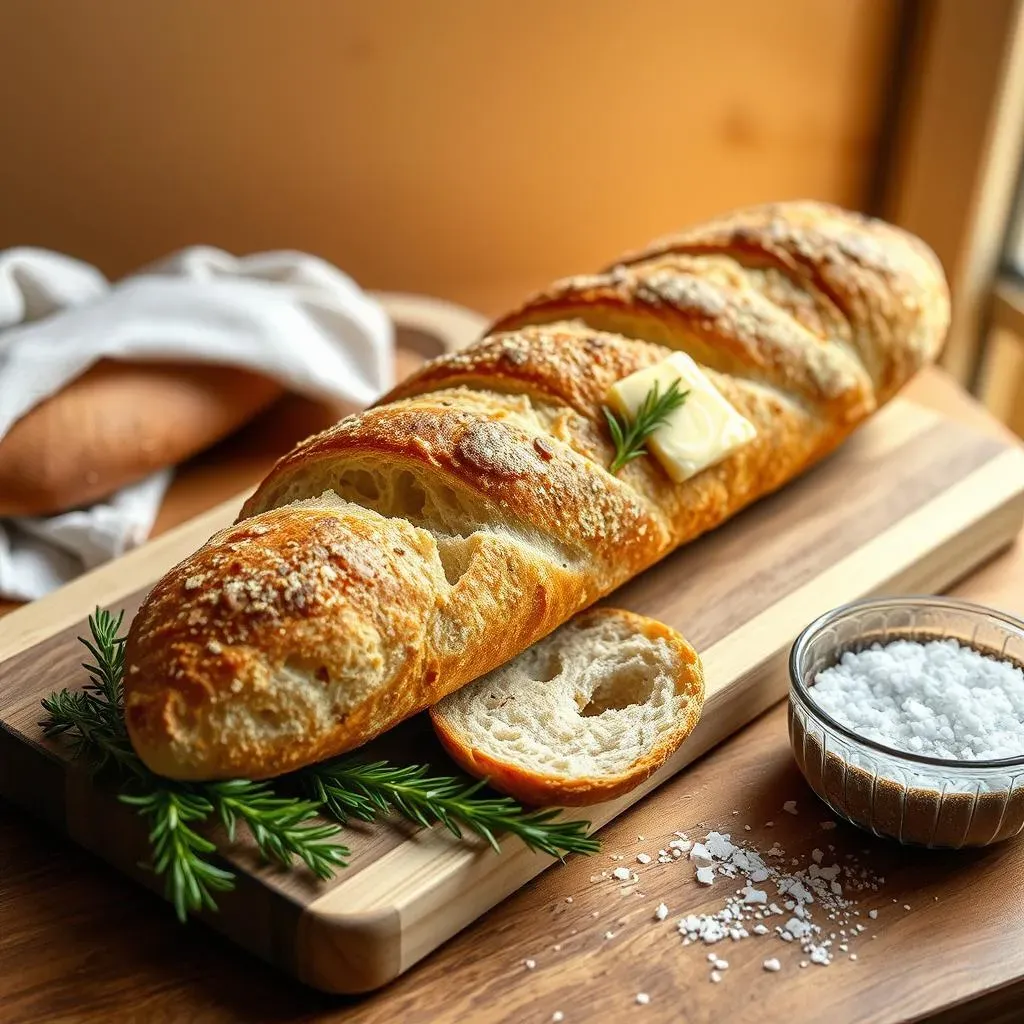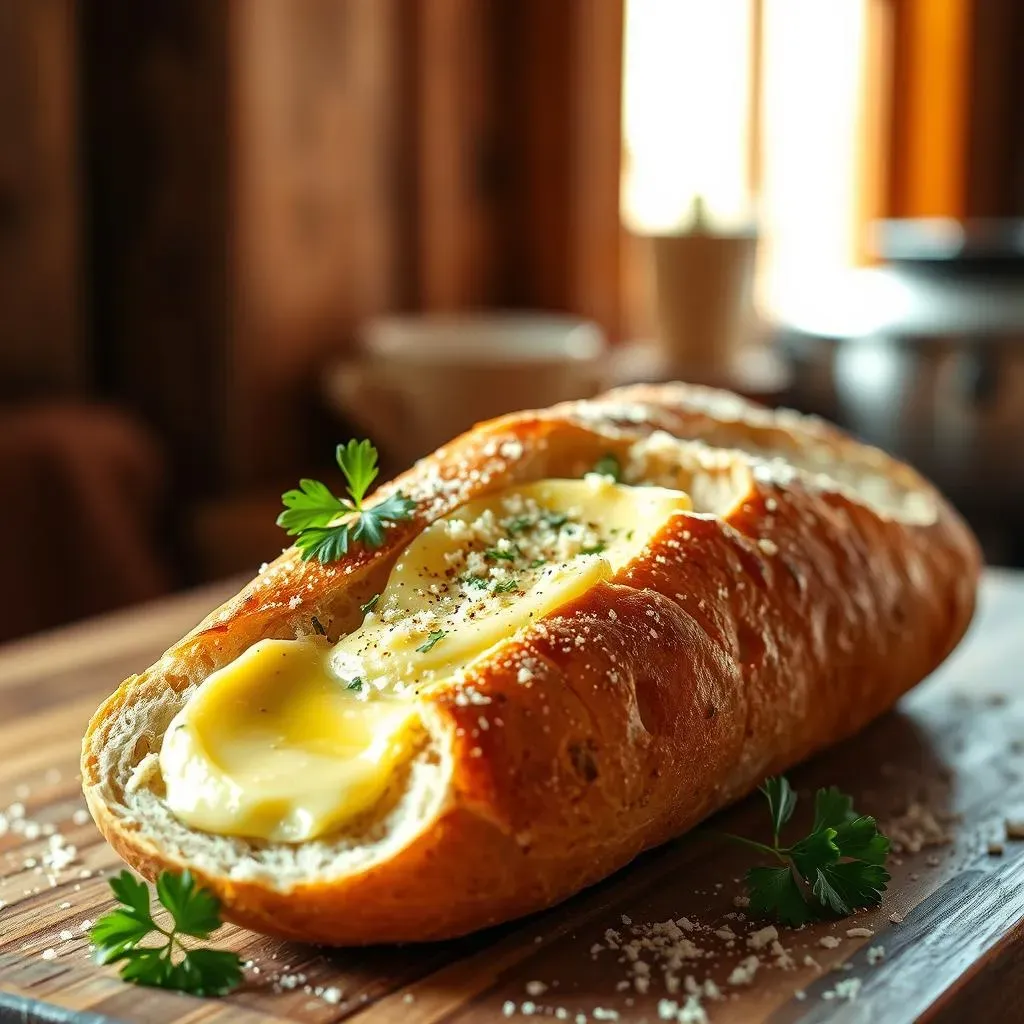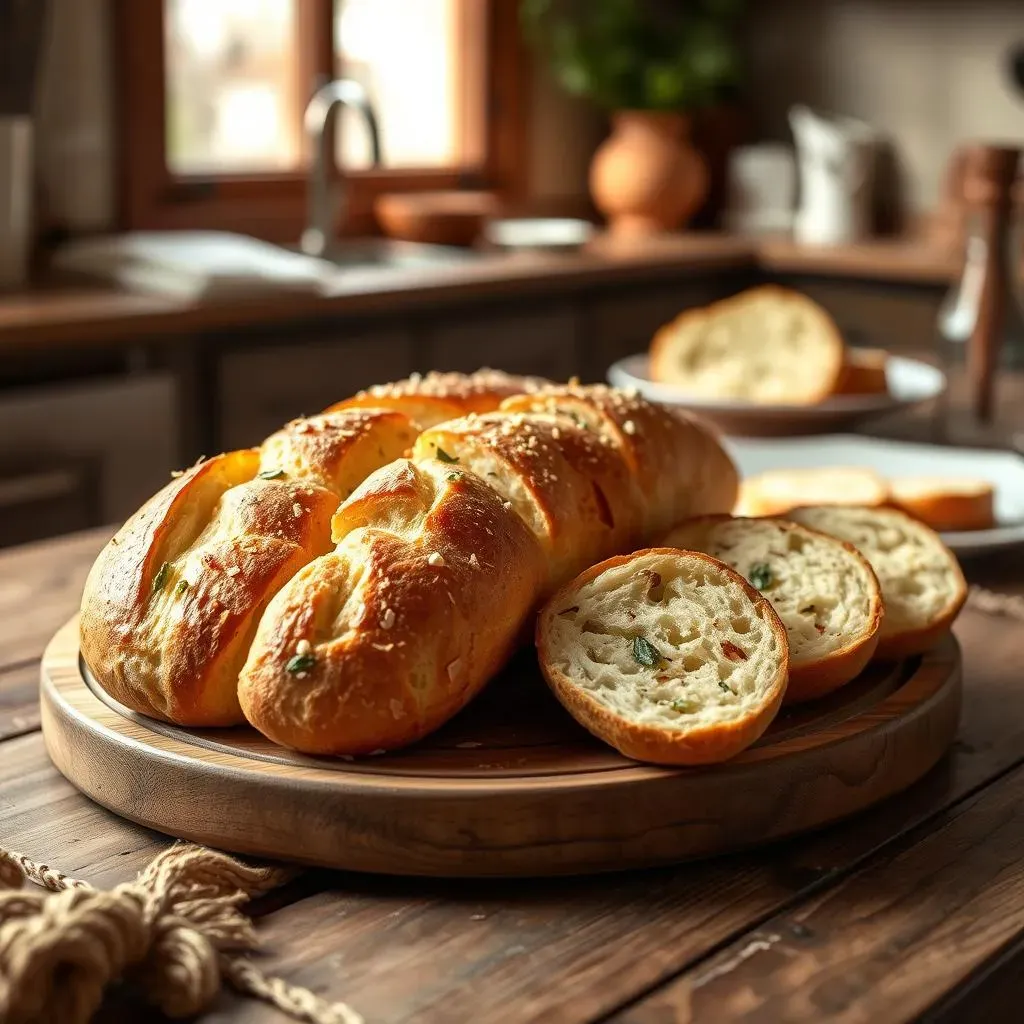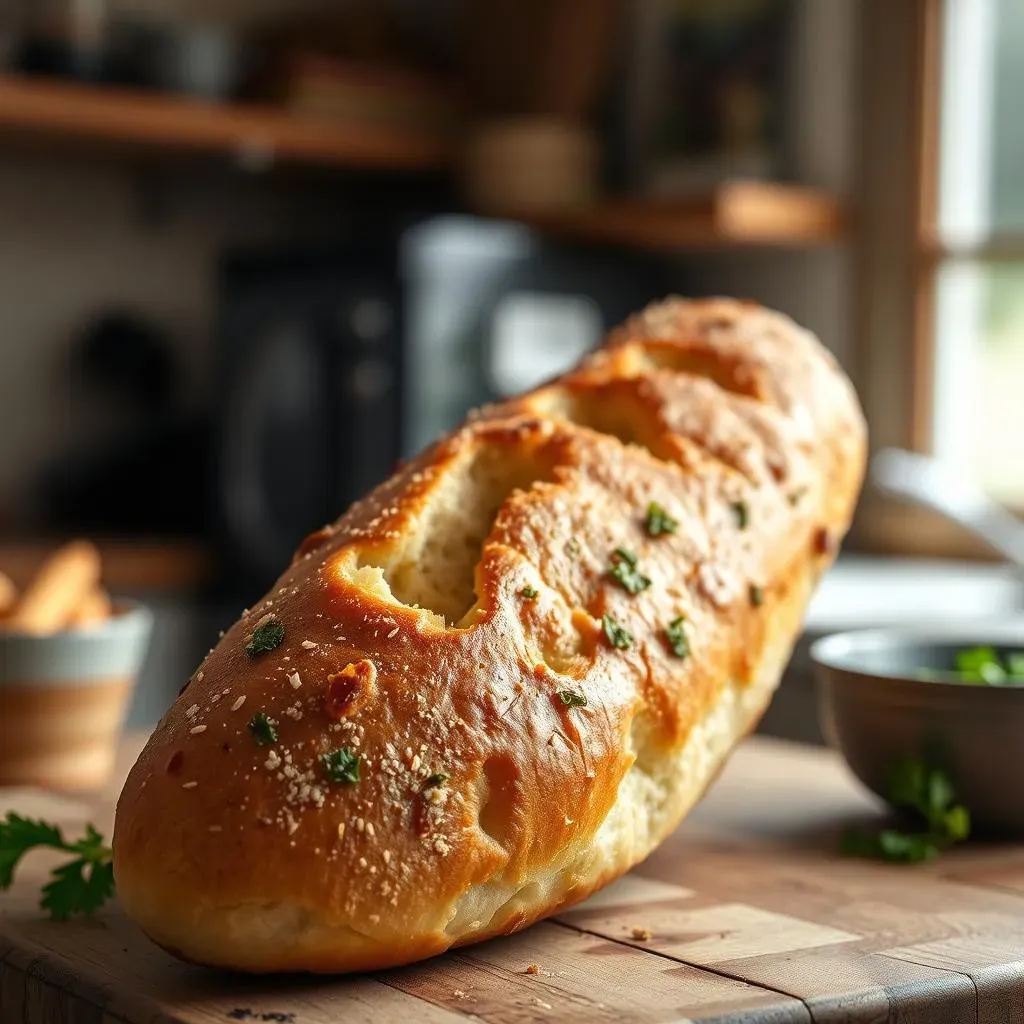Table of Contents
Garlic bread. Just the words conjure up images of warm, crusty bread, oozing with garlicky, buttery goodness. But let's be honest, not all garlic bread is created equal. Some are dry, some are bland, and some... well, let's just say they're forgettable. This article is your passport to garlic bread nirvana. We'll explore the art of making truly exceptional garlic bread, using the perfect base: a crisp, airy French baguette. Learning how to make garlic bread with French baguette is easier than you think! We'll cover everything from selecting the ideal baguette – because yes, it matters! – to perfecting the garlic butter, unlocking the secrets to achieving that perfectly crispy exterior and soft, flavorful interior. We’ll even share tips and tricks to elevate your garlic bread game, turning it from a simple side dish into a culinary masterpiece. Whether you're a seasoned chef or a kitchen novice, get ready to discover the simple steps to making garlic bread that will leave your taste buds singing. So, let’s embark on this delicious journey together and learn how to make garlic bread with french baguette that will become your new favorite side dish.
Choosing the Perfect French Baguette for Garlic Bread

Choosing the Perfect French Baguette for Garlic Bread
The Crust: A Foundation of Flavor
The crust is the unsung hero of a great garlic bread experience. You want a crust with a satisfying snap, not something brittle that crumbles at the slightest touch. Think of it like this: the crust is the canvas, and your garlic butter is the masterpiece you're about to paint. A good crust provides the perfect texture contrast to the soft, buttery interior. Look for a baguette with a deeply golden-brown color, indicating a well-baked crust. Avoid baguettes with pale or unevenly browned crusts, as they may be underbaked and lack the necessary texture.
Don't be afraid to give your chosen baguette a gentle squeeze. A slightly firm crust is ideal; it should yield a bit under pressure but not feel soft or doughy.
Crust Characteristic | Ideal for Garlic Bread |
|---|---|
Deep golden brown, crisp | Yes! |
Pale, soft, or unevenly browned | No |
Slightly firm, yields under gentle pressure | Yes! |
Completely hard and unyielding | Probably too stale |
The Crumb: Softness and Absorption
The inside of your baguette, the crumb, needs to be soft and airy enough to absorb the delicious garlic butter. You don't want a dense crumb that resists the butter, leaving you with dry, flavorless bread. Think of the crumb as a sponge; the more porous it is, the better it will soak up the flavorful garlic butter mixture. A good crumb will have a light, almost fluffy texture, not heavy or gummy.
When you gently press the baguette, you should feel a slight give, indicating a soft, absorbent crumb. The crumb should have small, irregular holes, which are a sign of proper fermentation and baking.
- Check the baguette's texture: Gently press the loaf. It should spring back slightly.
- Examine the crumb's color: It should be a creamy off-white or light beige.
- Look for small, irregular holes in the crumb: This indicates a well-fermented loaf.
Freshness is Key
This might seem obvious, but using a fresh baguette makes all the difference. A stale baguette will be difficult to slice, and its hard crust and dry crumb won't absorb the garlic butter properly. The best way to ensure freshness is to buy your baguette the same day you plan to make garlic bread. If you can't do that, store it in a plastic bag at room temperature for up to a day or freeze it for longer storage.
A truly fresh baguette will have a pleasant aroma, and its crust will have a slightly chewy texture. Avoid baguettes that feel hard or dry to the touch, or that have a musty odor.
Mastering the Garlic Butter: Recipes and Techniques for How to Make Garlic Bread with French Baguette

Mastering the Garlic Butter: Recipes and Techniques for How to Make Garlic Bread with French Baguette
The Classic Garlic Butter
Let's start with the foundation: classic garlic butter. This is where the magic happens. You'll need good quality butter, softened to room temperature – this makes it easier to blend with the garlic and other ingredients. The amount of garlic is up to you; start with a few cloves and add more to taste. Remember, fresh garlic is key! Jarred garlic just doesn't have the same punch. I like to mince my garlic finely, but you can also use a garlic press for a smoother texture. A pinch of salt enhances the garlic flavor, and a little freshly chopped parsley adds a touch of brightness. Once everything's combined, you have your basic garlic butter. Simple, yet incredibly effective. Remember to taste as you go and adjust seasoning to your preference. This is your creation, after all!
- Ingredients: Softened butter, minced garlic, salt, freshly chopped parsley
- Instructions: Combine all ingredients in a bowl and mix well.
- Tip: Taste and adjust seasonings as needed.
Elevating Your Garlic Butter: Flavor Variations
Now that you've mastered the basics, let's explore some exciting variations. Think of this as your garlic butter playground! Adding herbs like rosemary or thyme adds a delightful complexity. A touch of grated Parmesan cheese creates a savory, umami depth. For a bit of heat, consider adding a pinch of red pepper flakes. Don’t be afraid to experiment! Lemon zest brightens the flavor profile, while a drizzle of olive oil adds richness. You can even incorporate roasted garlic for a mellower, sweeter flavor. The possibilities are endless! Try different combinations and create your signature garlic butter. Don't forget to document your experiments – you might stumble upon your next culinary masterpiece!
Flavor Variation | Ingredients to Add | Flavor Profile |
|---|---|---|
Herby Garlic Butter | Rosemary, thyme | Earthy, aromatic |
Cheesy Garlic Butter | Parmesan cheese | Savory, umami |
Spicy Garlic Butter | Red pepper flakes | Spicy, savory |
Serving and Storing Your Delicious Homemade Garlic Bread with French Baguette

Serving and Storing Your Delicious Homemade Garlic Bread with French Baguette
The Perfect Serving Temperature
For the ultimate garlic bread experience, serve it warm, but not scorching hot. The ideal temperature allows the butter to be beautifully melted and the bread to retain its lovely texture. Serving it slightly warm allows the flavors to fully bloom, enhancing the taste of the garlic and butter. If you've baked your garlic bread ahead of time, simply reheat it gently in the oven or microwave until heated through. Avoid over-heating, which can result in dry, hard bread.
Consider the occasion when deciding how to serve your garlic bread. For a casual dinner, simply slice it up and place it in a basket. For a more formal setting, you might arrange the slices on a platter, perhaps alongside other appetizers. A simple yet elegant presentation can elevate the overall dining experience.
Serving Occasion | Serving Suggestion |
|---|---|
Casual Dinner | Basket of sliced garlic bread |
Formal Dinner | Plated slices, perhaps with other appetizers |
Party | Cut into smaller pieces for easy sharing |
Storage Strategies for Leftovers
If you happen to have any leftovers (which is highly unlikely!), proper storage is key to preserving the deliciousness of your garlic bread. Allow the bread to cool completely before storing. Wrap it tightly in aluminum foil or plastic wrap to prevent it from drying out. Storing it in the refrigerator will keep it fresh for up to three days. To reheat, simply wrap the bread in foil and warm it gently in a low oven. Alternatively, you can reheat slices in a toaster oven or microwave for a quick and easy way to enjoy leftover garlic bread.
Freezing is also a great option for longer storage. Wrap the cooled garlic bread tightly in foil, then place it in a freezer-safe bag or container. Frozen garlic bread can last for up to two months. To thaw, remove it from the freezer and let it sit at room temperature for a few hours, or reheat it directly from frozen in the oven (this will take a bit longer).
- Refrigerator: Up to 3 days, wrapped tightly in foil or plastic wrap.
- Freezer: Up to 2 months, wrapped tightly in foil and placed in a freezer-safe bag or container.
Creative Serving Ideas
Beyond the classic accompaniment, let your creativity shine! Consider serving your garlic bread alongside soups, stews, or pasta dishes. It's a fantastic way to soak up those delicious sauces! You can also cut it into smaller pieces as an appetizer or finger food for parties. Think about making garlic bread croutons for salads or using it as a base for bruschetta. The possibilities are as limitless as your imagination! Don't be afraid to experiment and find new and exciting ways to enjoy your homemade garlic bread.
Remember, the best way to serve your garlic bread is the way that you enjoy it most! Whether it’s a simple side dish or a creative culinary creation, your homemade garlic bread is sure to be a hit.
